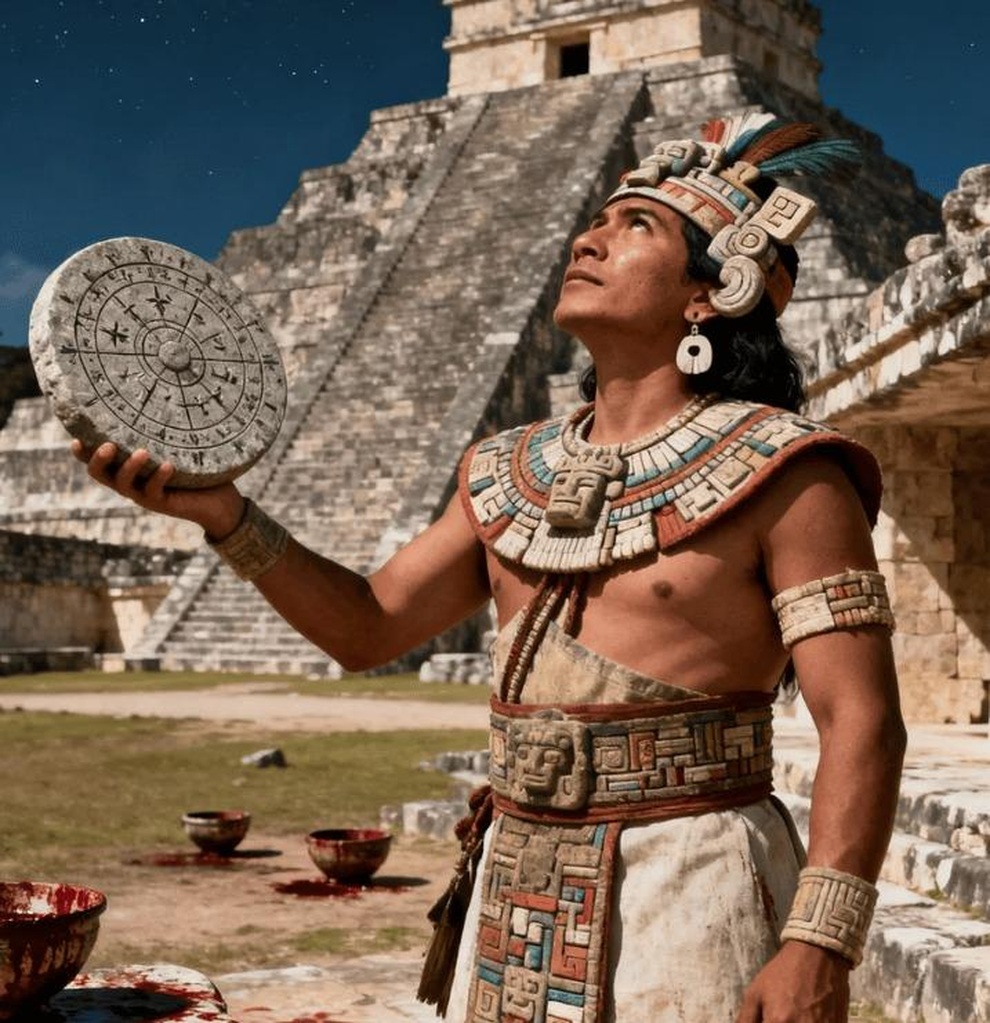Around 320 AD, while Asian scholars were still struggling with rudimentary calculations of the Moon's movements, in the Petén jungle (now in Guatemala), Maya priests had reached the pinnacle of the art of astronomical observation.
The most convincing evidence is the Leiden Jade Tablet – a 20cm long engraving that the king once wore around his waist.
The back of the jade tablet contains an amazing mathematical secret: the Maya divided the phases of the Moon into six alternating 29- and 30-day cycles, calculating an average cycle of 29.5302 days, which deviates by only 0.00039 days from the modern measurement (29.53059 days).
What is remarkable is that this precision did not come from telescopes or optical instruments, but from the patience, keen observational skills and base-20 (vigesimal) mathematics of the Maya.
With simple symbols like dots and dashes, they created a system of calculation that was much faster and more efficient than the Roman numeral system in use in Europe at the time.
Not stopping there, the Mayan priests also applied the same principles of “algorithmic optimization” today.
Excavations at the Uxmal site have shown that they used a “lunar rotation method” to correct for errors, resetting the calendar every 144,000 days. This system was even more advanced than the Julian reform adopted in Europe more than 1,200 years later.
In particular, the Maya's sophisticated observational ability was also shown in the cycle of Venus - the second brightest planet in the sky. They determined that one rotation of Venus lasts 584 days, almost matching the modern result of 583.92 days.

In Mayan civilization, astronomy was not only a scientific knowledge, but also a supreme tool of power for the rulers. On the spiral stone steps of El Caracol observatory at Chichen Itza, priests not only observed the stars, but also planned wars, harvests and sacrifices.
At Tikal, one of the most powerful kings, “Emperor III,” had the phases of the moon carved into the walls of his tomb, holding a serpent-shaped scepter as he stood atop an observatory. Control of the lunar cycle meant the right to determine favorable planting days, military campaigns, and sacrificial ceremonies.
Behind the mystique of the gilded temples lies a mix of science and extreme faith. Every time the planet deviated from its predicted orbit, the Maya believed the gods were angry and had to be appeased with blood. The smell of fermented wine mixed with a strong fishy odor permeated the steps of the towers – part of a ritual honoring “cosmic precision.”
For the ruling class, astronomical calculations were not simply a matter of worshiping the gods, but of consolidating the divine power of the royal family. Sacrificial rituals, however brutal, were a display of knowledge and technology, affirming the status of the holders of the celestial calendar.
The engravings full of symbols, the “blood letters” in the Maya astronomical diaries are actually precise records of data, not magic spells. They are a testament to a civilization that was both superstitious and brilliant in knowledge - where understanding the universe meant absolute power on earth.
The forgetting of history
Ironically, when the Spanish came and burned most of the Mayan manuscripts in the 16th century, they ridiculed the drawings of these "barbarians."
Little did they know that the ruined bark tablets contained such rigorous mathematical formulas as the “144,000-day calibration method.” While European scholars of the time were still debating the geocentric model of the universe, the Maya, with their rudimentary tools and their eyes, were turning the laws of the universe into a powerful bargaining chip.
Today, the Chichen Itza observatory still points to the rising moon. The split-second precision of the Maya calendar is an astonishing legacy, but it is also a reminder of the cruelty of power.
Behind these numbers lies the cruelty of human sacrifice and political calculations. However, the achievements of the Maya demonstrate that knowledge and precision can bring superior power, whether in an ancient civilization or in today's high-tech world.
Source: https://dantri.com.vn/khoa-hoc/bi-mat-lich-maya-doi-mat-vuot-qua-dai-quan-sat-va-suc-manh-tu-nghi-le-mau-20251016235035207.htm






![[Photo] Parade to celebrate the 50th anniversary of Laos' National Day](/_next/image?url=https%3A%2F%2Fvphoto.vietnam.vn%2Fthumb%2F1200x675%2Fvietnam%2Fresource%2FIMAGE%2F2025%2F12%2F02%2F1764691918289_ndo_br_0-jpg.webp&w=3840&q=75)
































![[Photo] Worshiping the Tuyet Son statue - a nearly 400-year-old treasure at Keo Pagoda](/_next/image?url=https%3A%2F%2Fvphoto.vietnam.vn%2Fthumb%2F1200x675%2Fvietnam%2Fresource%2FIMAGE%2F2025%2F12%2F02%2F1764679323086_ndo_br_tempimageomw0hi-4884-jpg.webp&w=3840&q=75)









































































Comment (0)